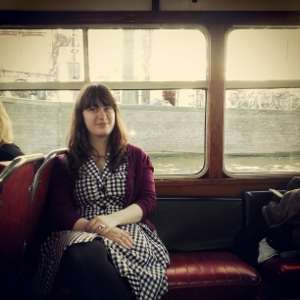The Small Hall of the Concertgebouw in Amsterdam has had some very exciting chamber music programs this season. Tonight’s concert involved one of the most promising young cellists on the scene, Jakob Koranyi, and pianist Simon Crawford-Phillips. They played a diverse program featuring solo cello pieces by Ligeti and Esa-Pekka Salonen, and cello sonatas by Brahms and Shostakovich.
Starting off with Ligeti’s Sonata for solo cello one of the first things I noticed seeing Koranyi play was that he hardly ever looked up and had his eyes closed most of the time. This only increased my admiration for his playing – the piece is hardly simple yet sounded incredibly beautiful. The first movement was rather calm and all about harmony and melodies, whereas the second was much more energetic and required some insanely virtuoso playing from Koranyi. At times I wasn’t sure if I was really listening to just one instrument.
For the second piece, Brahms’ Cello Sonata no. 1, Koranyi was joined on stage by Simon Crawford-Phillips. This sonata was the most conservative work played, and as such seemed almost less impressive. It is a beautiful work, and in particular the second movement was stunning, but lacked some of the excitement of the other works. Of course, Brahms’ piece is far from being boring, and it is in fact a wonderful listen – but its positioning between works by Ligeti and Salonen simply cannot help but make it feel somewhat less exhilarating.
The reason I went to this concert in the first place was Knock, Breathe, Shine by Esa-Pekka Salonen. Salonen’s works are not performed as much as I’d like, so I was very excited to see this solo cello piece. It consists of three movements, and the first in particular was an incredible tour de force. The title of the work comes from John Donne’s 14th Holy Sonnet:
Batter my heart, three-person'd God; for you
As yet but knock; breathe, shine, and seek to mend.
The three words of the title correspond to the three movements; ‘Knock’ is a movement where the cello is almost turned into a percussion instrument, at first not even requiring the bow, whereas ‘Breathe’ is calmer and more melodic. ‘Shine’ seems to bring the two movements together and requires some incredible virtuoso playing from the cellist (Salonen himself described the work as like “juggling three chainsaws”).
There are still the rhythms that ground all of Salonen’s music: he has often said that music is a bodily experience, and this belief is always palpable. Although Salonen’s work is indubitably contemporary in style, it is quite comforting to listen to because of its tonality and harmonies. I always find with his music that although I hardly ever expect what’s coming next, it is never earth-shattering but instead makes complete sense. And this is a great feat, because it means that the music is interesting and challenging to the listener without becoming alienating. Knock, Breathe, Shine is a perfect example of this. Koranyi certainly made sounds on the cello I had never heard before, and it was rhythmically challenging and required you to keep thinking, but when it ended I felt completely satisfied. Of course this is also due to Koranyi’s commanding playing; despite having the score in front of him (which was really only noticeable because he played everything else by heart and with his eyes closed), you could tell that he loved the music himself and he was more than up to the challenge of emphasizing the melodic content and clarity of the music whilst tackling the virtuoso demands of Salonen’s writing.
Shostakovich’s Cello Sonata is quite an early work, composed in 1934. It consists of four movements, starting off with an Allegro non troppo. As with quite a few other chamber music pieces by Shostakovich, I found the first movement to be the weakest in both melody and [interest]. The second movement was much more energetic and interesting, but the definite highlight of the work is the fourth movement (Allegro). It starts of with a ditzy melody in the piano that the cello soon takes over and although it retains its playful character, it’s chock-full of challenging scales on the cello and pounding notes on the piano. It was interesting that there was hardly any interaction between Crawford-Phillips and Koranyi on stage yet you could sense their fun in playing together, and they were absolutely perfectly attuned to one another.


